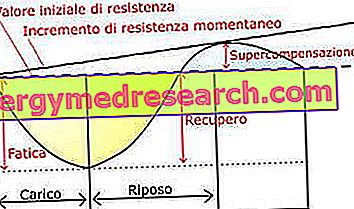
What is Arixtra?
Arixtra is presented as a solution for injection contained in a pre-filled syringe.
The active substance is fondaparinux sodium (1.5 mg, 2.5 mg, 5 mg, 7.5 mg or 10 mg per syringe).
What is Arixtra used for?
Arixtra (in the dosages of 1.5 mg and 2.5 mg) is used for the prevention of venous thromboembolic episodes (VTE, or problems related to the formation of blood clots) in patients undergoing major orthopedic surgery in the lower limbs, for example hip replacement surgery and reduction of a hip or knee fracture. It can also be used in patients operated on the abdomen, in particular for tumors, which, given their age or disease, are considered to be at high risk of VTE, or which are immobilized due to an acute pathology.
At higher doses (5 mg, 7.5 mg and 10 mg), Arixtra is used to treat venous thromboembolic episodes such as deep vein thrombosis (DVT, clot formation in the lower limbs) or pulmonary embolism (EP, clots in the lungs).
The 2.5 mg dose can also be used to treat patients with unstable angina (a type of chest pain that changes in severity) or myocardial infarction (heart attack):
- without "ST roof elevation" (an abnormal reading of the electrocardiogram or ECG) in patients who do not need to undergo angioplasty urgently (within two hours): for angioplasty, or "percutaneous coronary intervention" (PCI), a 'operation to unlock the blood vessels of the heart;
- with "ST roof elevation" in patients who are given thrombolytic drugs (" clot busters ") or who are not going to be subjected to any other treatment to restore blood flow to the heart.
The medicine can only be obtained with a prescription.
How is Arixtra used?
For the prevention of VTE, the recommended dose is 2.5 mg once a day by subcutaneous injection (under the skin). For operated patients, the first dose should be administered six hours after the end of the procedure, after which the treatment should be continued until the risk of VTE has been reduced or, as a rule, at least five to nine days after surgery. For patients with kidney problems, Arixtra may not be suitable, or the 1.5 mg dose may be used.
For the treatment of DVT or PE, the recommended dose is 7.5 mg once a day by subcutaneous injection (under the skin), usually for seven days.
For patients with unstable angina or myocardial infarction, the recommended dose is 2.5 mg once a day via subcutaneous injection, but the first dose is given intravenously (into a vein), via an existing drip, or as infusion (drip) in patients with raised roof ST. Treatment should start as soon as possible after diagnosis and continue for up to eight days or until the patient is discharged from the hospital. Arixtra is not recommended for patients who are about to undergo certain types of PCI.
For more information, see the summary of product characteristics (also included with the EPAR).
How does Arixtra work?
The formation of blood clots can be a problem if they hinder blood circulation in any way. Arixtra is an anticoagulant, meaning it prevents blood clotting. The active substance in the medicine is fondaparinux sodium, which inhibits one of the substances (factors) involved in the coagulation mechanism, factor Xa. The inhibition of this factor automatically blocks the production of thrombin (another factor of coagulation), which prevents the formation of clots. Used after surgery, Arixtra greatly reduces the risk of clots forming. By reducing clot formation, Arixtra can also help maintain blood flow to the heart in patients with angina or a heart attack.
How has Arixtra been studied?
The effectiveness of Arixtra has been studied with regard to the prevention and treatment of VTE. In prevention studies, Arixtra was compared with other anticoagulants: enoxaparin (cases of hip or knee surgery, over 8, 000 patients) or dalteparin (cases of abdominal surgery, 2 927 patients). It was also compared with a placebo (a dummy treatment) in the preventive care of patients with acute pathologies (839 patients) and of patients treated for an additional 24 days after an operation to reduce hip fractures (656 patients). Regarding the treatment of VTE, Arixtra was compared with enoxaparin (deep vein thrombosis, 2 192 patients) or with unfractionated heparin (pulmonary embolism, 2 184 patients). In all the studies the main measure of effectiveness was the overall frequency of thrombotic events (ie the appearance of problems caused by blood clots).
Arixtra has also been studied in two main studies involving patients with unstable angina or myocardial infarction. The first study compared the effects of Arixtra with those of enoxaparin in more than 20, 000 patients with unstable angina or myocardial infarction without elevation of the ST segment; the second compared Arixtra with standard therapy (unfractionated heparin in suitable patients, or placebo) in more than 12, 000 patients with myocardial infarction with ST segment elevation. The main measure of effectiveness was the proportion of patients who died or contracted an "ischemic event" (restriction of blood flow to an organ, including the heart).
What benefit has Arixtra shown during the studies?
The overall frequency of thrombotic events in patients treated with Arixtra was significantly lower than in patients treated with placebo or enoxaparin (after lower limb surgery) and similar in patients treated with enoxaparin (with deep vein thrombosis) as well as in patients treated with dalteparin or unfractionated heparin.
Arixtra was as effective as enoxaparin in preventing death or an ischemic event in patients with unstable angina or myocardial infarction without elevation of the ST segment, in which approximately 5% of the patients in each group had died or had contracted an ischemic event after nine days. In the study of myocardial infarction with ST segment elevation, Arixtra, compared to a standard therapy, reduced the risk of death or another heart attack by 14% after 30 days. However, these results were not sufficient to show whether Arixtra was more effective than unfractionated heparin or not.
What is the risk associated with Arixtra?
As with other antithrombotic drugs, the most common side effect of Arixtra is bleeding. For the full list of all side effects reported with Arixtra, see the Package Leaflet.
Arixtra should not be used in patients who may be hypersensitive (allergic) to fondaparinux sodium or another substance or who may have bleeding already in place, or acute bacterial endocarditis (an infection of the heart), or serious problems to the kidneys. For the full list of usage restrictions, see the package leaflet.
Why has Arixtra been approved?
The Committee for Medicinal Products for Human Use (CHMP) decided that the benefits of Arixtra outweigh the risks in both the prevention and treatment of VTE, unstable angina and myocardial infarction and therefore recommended the release of authorization marketing of Arixtra.
Other information about Arixtra:
On 21 March 2002, the European Commission issued a marketing authorization for Arixtra, valid throughout the European Union. The marketing authorization was renewed on March 21, 2007. The holder of this authorization is Glaxo Group Ltd.
For the full EPAR version of Arixtra click here.
Last update of this summary: 09-2007


